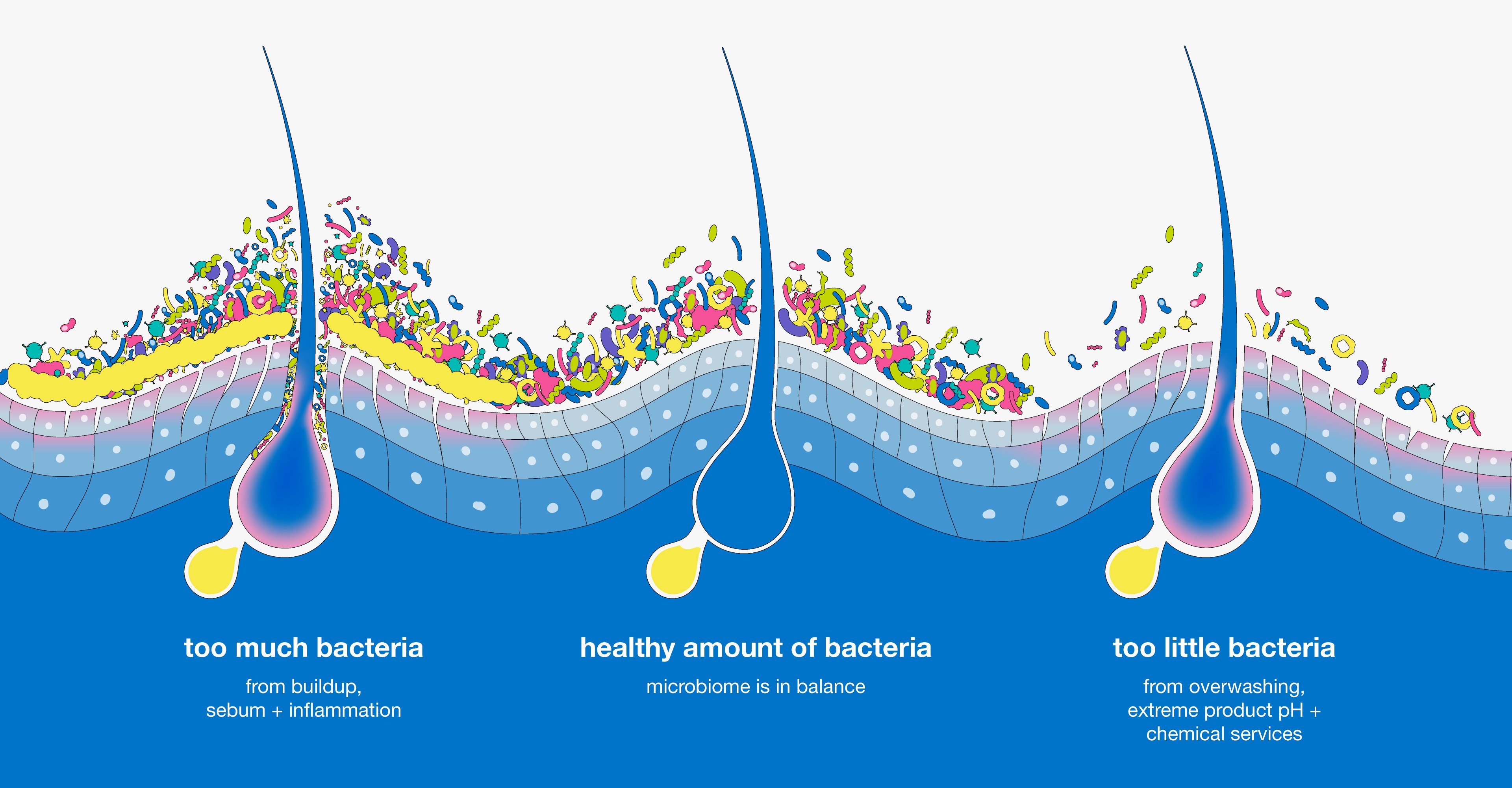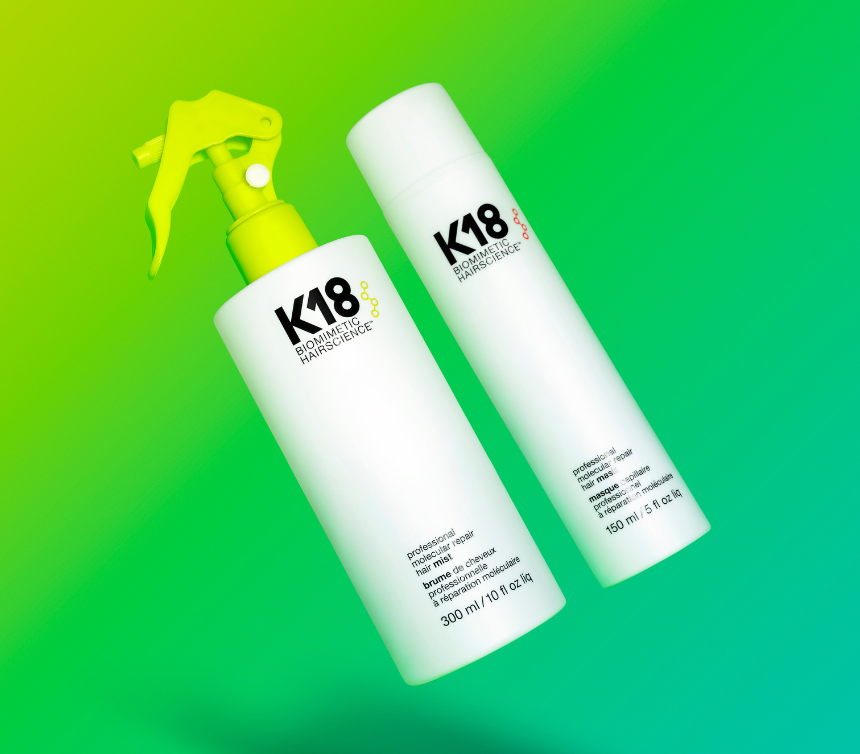You know how we roll, we like to challenge, myth bust, and break down every type of buzzword in the hair world—because we found through our research a lot of what the hair care industry has been telling us isn’t always the most, well, factual.
Sometimes the buzz is in an area of active, ongoing research. Today’s word falls into that category: cutting-edge science suggests it is important for skin and hair health, but new information is constantly discovered. So you should care about it, but you may also not fully understand WHAT it means…even if you’re seeing it pop up in a lot of places.
The word of the day is: Microbiome. So let’s break it down, microbiome means all the microorganisms in a particular environment.
FUN FACT: We humans are mostly made of microbes. 100 trillion of them. As many as five pounds on average. Woah.
For those of you who are like huh? I’ve never heard of a microbi-whatever. That’s ok! Microbiome research and its discoveries are only a few decades old, which is probably why it’s becoming the hot new thing in the beauty world.
We care about it because of overall hair and scalp health, both impacted by whether or not your microbiomes are healthy. Your scalp and hair are a melting pot of microorganisms that include lots of fancy bacteria with Latin names like C. acnes, staphylococcus epidermis, Malassezia restricta, and Malassezia globosa, among many others. Not only are these bacteria and fungi living on the surface of your skin and scalp, but their communities are unique depending on the location of that skin on your body—meaning that your cheek, forehead, and inside your hair follicles all have different microbiomes!
so, what does your microbiome do?
Those microorganisms, trillions of them, are in constant communication with the cells of your body. When the microbial “community” is happy and in balance, and your scalp skin is healthy, the two exist in harmony. The scalp provides a home for these beneficial microbes and “food” in the form of sebum—our scalp’s natural oils. The microbes in turn supply essential vitamins and amino acids to the scalp cells to support healthy hair growth. The members of your scalp microbiome can even fend off “bad” or harmful microbes that could cause harm to your scalp, acting like the first line of defense.

This is great, because the microbiome is there to support your hair + scalp’s natural protective barrier. When your hair and scalp are healthy, you have a perfect balance of oils, moisture, and beneficial microorganisms, i.e. a healthy microbiome.
But what happens when your microbiome is not so healthy? You may notice outward changes in your hair like greasy roots, dandruff, and that dry and itchy feeling. Some might even notice things like thinning hair that breaks and falls out easily.
What’s happening on a deeper level is that your scalp + hair’s natural protective barriers have been disturbed, leaving hair more susceptible to the annoyances above. While bacteria at its optimal level has us seeing hearts, like anything, you CAN have too much or not enough of a good thing. Dandruff, for example, is actually a result of an abundance of certain types of bacteria and fungi on the scalp.
how does my microbiome get thrown off balance?
There’re a few reasons you may have too much or too little bacteria hanging out on your hair + scalp. Haircare products and environmental grime building up on the hair introduce new players to the scalp-microbiome environment, which in turn affects that harmonious relationship. A few examples:
Accumulation of excess sebum, which may happen from going too long between shampoos, can result in overgrowth of certain species, throwing the microbiome’s equilibrium out of whack. Over time, this can create the perfect (micro)environment for dandruff.
Cosmetic products contain preservatives—which is a good thing to make sure harmful microorganisms don’t make us sick by growing in our products (ick). These preservatives kill good and bad microbes alike, affecting the beneficial microorganisms living on our scalp. Losing necessary bacteria can also happen through overwashing, or shampooing hair too frequently with harsh surfactants. This can send bacteria into overdrive trying to return their environments to equilibrium.
Products without optimized pH or environmental irritants can cause sensitivity and inflammation of the scalp, once again throwing off that delicate balance. Microbes that were once helpful may turn problematic, leading to an additional immune response from your scalp skin cells and hair follicles.
Finally, chemical services such as relaxing, perming, and coloring your hair can dramatically alter the pH of your scalp. A pH that is too low or too high typically prevents microbial growth, which gives bad microorganisms a chance to take over. Yikes. Not only do they smell bad (that pesky Malassezia!), but this can impact the scalp skin barrier function of natural oils and increase inflammation.
how do I keep my microbiome healthy?
One of the easiest things you can do to protect the microbial communities and keep the bacterial microbiome on your scalp diverse and healthy is to wash the excess oil and dirt out of your hair regularly with a gentle, microbiome-friendly shampoo. Your hair attracts a lot of STUFF, like dirt and pollutants, so these need to be washed away before they disturb your natural pH levels, or clog the hair follicles.
But don’t go into overdrive, overwashing is one of the main causes of microbiome imbalance. To avoid over-stripping the natural oils on your hair, do not wash more than necessary for your hair + scalp.
HOT TIP: Just like the skin on the rest of your body, scalp skin can benefit from an occasional gentle sloughing to remove dead-skin-cell buildup. Use a detox shampoo + a scalp massager for about a minute to clear any excess skin cells away.
The bottom line?
This buzzword is worth the hype when understood correctly.
A healthy microbiome = happy hair, and happy hair = more expression. Sign us up.



